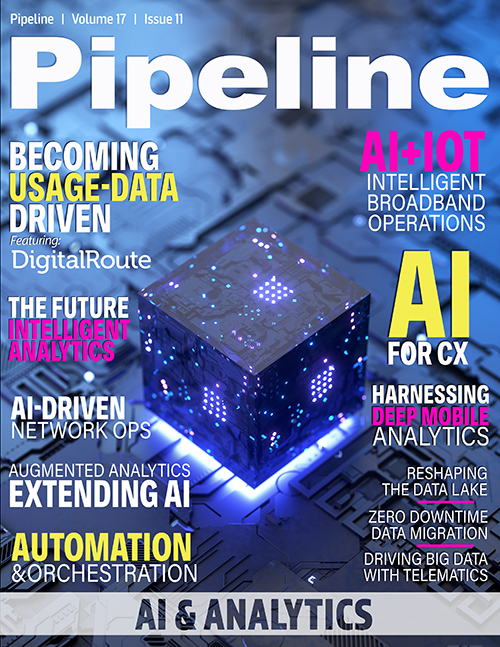Becoming Usage-Data Driven: A New Standard
Think usage data. Think different.
When thinking about usage data, we must think different. Most data platforms and homegrown solutions cannot properly manage usage data. To process usage data, you need to be able to handle the five Vs of big data: volume, variety, velocity, veracity, and value.
For example, let’s take velocity. Usage data is generated in real-time, in the moment when the service is consumed—not weeks later. Or if you look at veracity, this is about the integrity of your usage data. When your revenues rely on usage data, the data needs to be accurate, and you need to be able to trust it. Or take value: there is no value until the complete usage data record enters the ERP system at the end of the process, automatically and fully operationalized. Leaking usage data means leaking revenue. Over time, we have observed that ultimately all problems in usage-based revenue models are usage data problems.
Usage data is the core of digital business models, but tracking and orchestrating usage data is incredibly complex. Considering it as just requiring simple integration from data source to a billing system massively underestimates the data management requirements to secure, accurate, and reliable revenue management.
How to succeed with usage-based revenue
Usage-based revenue is the future of digital commerce. It’s also a better deal for the end customer and, at the end of the day, it’s a more sustainable model. Even though there is complexity, there is a huge untapped revenue opportunity to grab. It’s proven that companies with usage-based business models grow faster than the ones with only a flat fee or product sales.
At the core of every digital business model is usage data. If you control your usage data, that’s the fastest and safest way to open new revenue streams, but companies need to be prepared to think big, start small and move fast.
By bringing usage data under control, you can turn it into increased revenue, grow faster and increase value. Businesses will get more steady, healthy revenue streams and be able to control costs better. Also, if they can engage with customers in themoment they consume services, it becomes possible to better understand their needs and act faster on their demand. This kind of differentiation for your company will be hard for others to copy.
Automate your data streams for an agile quote-to-cash process
Companies are increasingly dealing with rapidly growing data volumes, which increases complexity and can lead to problems with dirty data. Imagine your quote-to-cash process relying upon dirty data, data that is incomplete, out of date or is not delivered at the right time to the right place!
When moving to usage-based business models, billing is one of the first areas where the lack of data quality and persistent data management is exposed. Slow, manual, and outdated data processes further increase complexity in your financial systems and will only lead to data errors and lost revenue.
Building fully automated operations is hard, but it is even harder to compete without them. By consolidating financial systems and automating everything that can be automated, you can drive down operational friction, reduce cost and data errors, prevent revenue leakage, and ultimately increase customer satisfaction.
Become usage-data driven (not just data-driven)
Once you have full control of your usage data, you can observe the reality of your customers’ usage consumption as it happens—how, when, where, and why customers are using your services. Usage data-driven companies are one step closer to their customers and the moments they are in. These unfiltered, real-time observations and insights can fuel marketing and product teams to improve and create new services, prices, and experiences.



















